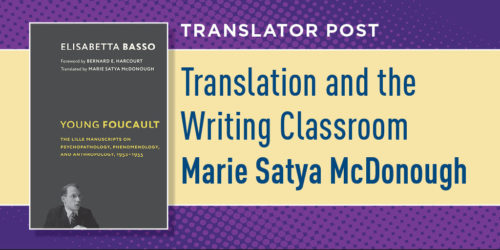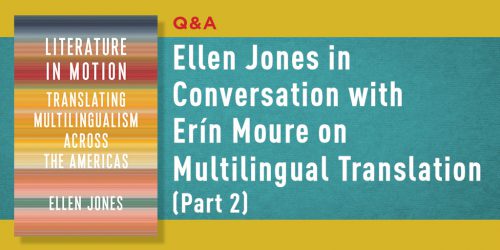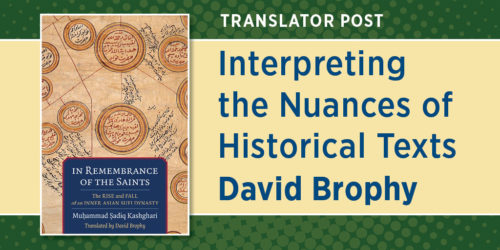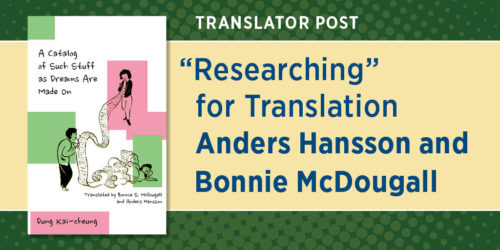Writing Through Multiple Alienation Chiara Cappelletto
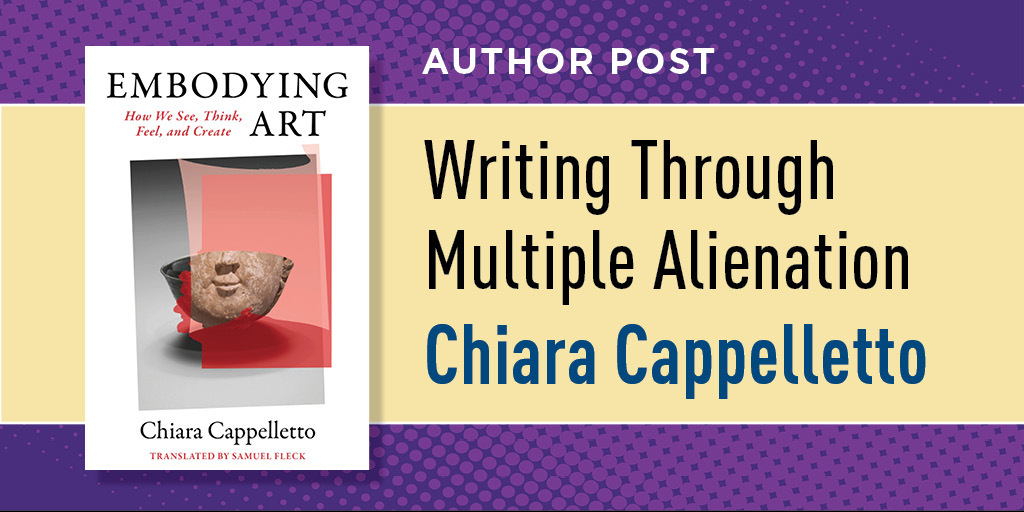
Embodying Art has been an experiment in thinking on paper through self-alienation. Starting from Samuel Fleck’s draft translation of my Neuroestetica, published in Italian a decade ago, I had originally planned to update, expand, and substantially revamp the text while writing directly in English, a language I learned as an adult. The idea was that Sam could “simply” revise it and smooth it out. We thought this arrangement would be more expedient. Perhaps we were right. What we did not expect was that such a pragmatic setup would give rise to a whole new authorial experience.
Sam and I started working together while living on opposite sides of the Atlantic. Being in a time zone six hours ahead of the translator meant that each morning I would read an edited version of the pages I had written the previous afternoon. Each Word document was a digital palimpsest, shared via Dropbox, with endless layers of comments and revisions. I got used to having my own arguments return to me in disguised form, sometimes with the paradoxical aftereffect of unmasking me. Notably, because English lacks a proper equivalent to the journalistic conditional—a verbal mood commonly used in Italian to report secondhand information or views—Sam’s translation frequently required me to take the floor and say “I.” The strangeness of the process was akin to what I normally experience when hearing a recording of my voice, but the feeling of inappropriability was uncanny. Could I really claim these thoughts as my own? Obviously, once a book is finished, the author must let it live its own life, but here, I was an author in the making, still testing out my reasoning. Was I not, after all, entitled to a little intellectual intimacy?
I decided to trust my sparring partner, despite knowing him not in person or by voice but only through his writing. Draft after draft, I learned to sense Sam’s enjoyment of and satisfaction with an effective linguistic outcome, as well as his perplexity and boredom with my disinclination toward certain phrasings, my idiosyncrasies, and my totally understandable desire to like what I wrote, be it at the cost of a residual Italianness. I chose to be an author not ab auctoritate but through collaboration. This route has been exacting but not altogether unexpected for me, since it fits with my years-long reflection on how intellectual power may be exercised in a participatory manner, which has in turn shaped my research enterprise about the performative nature of human identity.[i] At the end of the day, Embodying Art has been a constant exercise in intellectual trust. Was this liberty to experiment with a diffracted authorial subjectivity, to explore the extent to which my own intellectual process was in fact entangled with others’ questions and with foreign research habits, an advantage I could claim as a woman scholar who had fully mourned the myth of the Master?
This collaboration was not about working jointly but about determining what was conceivable through the interstices of two competing languages and writing styles.
To be sure, many men philosophers have written books, as we say in Italian, “a quattro mani” [four handed]—that is, they have coauthored them; Deleuze and Guattari are a case in point. Many intellectuals and authors, such as Cioran and Beckett, have written in a second language. Many men scholars check the translations of their own books. And of course, even in the humanities, many of us have learned to work cooperatively. But here, I was neither cowriting nor checking; Sam’s translation had a continuous aftereffect on my thinking. He embodied an ideal reader, in real time and as a real person in the world, thereby disrupting the position of the “model author.” After having worked for years on the notion that all agency has a vulnerable core, I was experimenting on myself. This collaboration was not about working jointly but about determining what was conceivable through the interstices of two competing languages and writing styles. Continental philosophers used to think, following Heidegger, that philosophizing is possible only in German. Sam’s and my rather challenging setup is representative of what we as scholars need today.
Some years ago, while serving as the coeditor of a multiauthored volume, I got into a heated discussion with a highly esteemed male visual studies scholar to whom I had suggested a few changes to put his contribution in dialogue with the others. He rejected my proposal: like it or not, those pages were representative of his viewpoint. He thought that he was saying something new within his own field and that any heterodirected changes could compromise it. I understand this position and the sincerity behind it. It is not about ego; it is about commitment, choice, and responsibility. And yet, this is an old-fashioned way of thinking about the intellectual enterprise; it presupposes a hiatus between the real world and the scholar authorized to enlighten it from a privileged standpoint. I am persuaded, rather, that philosophy is a hands-on intellectual practice. Like it or not—and I do like it—the bookworm and the ingenious solitary thinker immortalized in Rodin’s sculpture are, together with the highly valued notion of copyright, mythological figures of the past.
He embodied an ideal reader, in real time and as a real person in the world, thereby disrupting the position of the “model author.”
Intellectual trust is not academic etiquette; it mirrors the idea that no one is a self-sufficient cognitive agent imbued with a freestanding intellectual power. I have come to appreciate “writing through self-alienation” as absolutely consistent with the thesis of Embodying Art, which states that “we owe our very intelligence and survival to the (im)possibility of a continuous exchange with the world in which we are immersed, and with which we negotiate our inherent imbalance.” As I go on to conclude: “In the future, we may marvel at that abstract and autonomous mind we know we are not for presuming to live by itself, optimally unburdened by interactions with others’ bodies, feelings, thoughts, and artifacts. We may indeed look back at the disembodied Self as the greatest fiction to behold.” Indeed, I argue that every personal identity is biocultural and situated. Embodying Art is also a book about a research field that was and is in the process of developing. Sam’s and my close working relationship and the feedback system to which it gave rise were optimal for articulating a cutting-edge topic not yet properly at home in any language.
I am quite convinced that this experience has forever changed my most intimate understanding of what academic writing and, for that matter, an intellectual enterprise can be. Embodying Art showed me a new way of being an author in our time.
N.B. Of course, the process I just described applies to this post as well.
Chiara Cappelletto is an associate professor in aesthetics in the Department of Philosophy at the University of Milan. She is the author of Embodying Art: How We See, Think, Feel, and Create.


